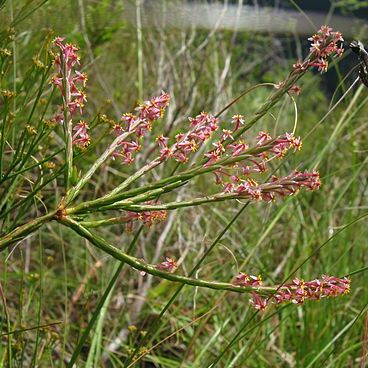Ovary sessile or subsessile, 1-chambered, glabrous; disk surrounding the base of the ovary inconspicuous, cup-shaped, often lacking; style filiform, inserted laterally, half as long to almost as long as the calyx tube; stigma minute, ± capitate, papillose.
Calyx tube cylindric, slightly widened at the apex, circumscissile above or below the top of the ovary, glabrous or hairy; lobes 4, much shorter than the tube, imbricate, the two outer slightly larger than the inner.
Stamens 4, in one whorl, inserted in the throat of the calyx tube, subsessile, alternating with the calyx lobes; anthers linear to oblong, basifixed, included or slightly exserted; pollen spheroid, polyforate.
Leaves opposite, 3-whorled or alternate, sessile; lamina entire, linear to ± round, often ciliate on the margins, coriaceous or subcoriaceous, parallel-veined.
Flowers fragrant at dusk, 4-merous, sessile, usually in the axils of the upper leaves, solitary, rarely in pairs, forming a spiciform inflorescence.
Seed with a shiny black crustaceous testa, the micropyle forming a curved beak; endosperm scanty; embryo straight; cotyledons fleshy.
Petals 4, 8 or 12, erect, fleshy, exserted, each surrounded by stiff hairs arising from the base.
Fruit dry, included in the persistent base of the calyx tube, indehiscent.
Branches 4-angled or terete, usually with prominent leaf-scars.
Bracteoles 2, conduplicate, usually ciliate.
Shrubs or undershrubs of ericoid habit.
